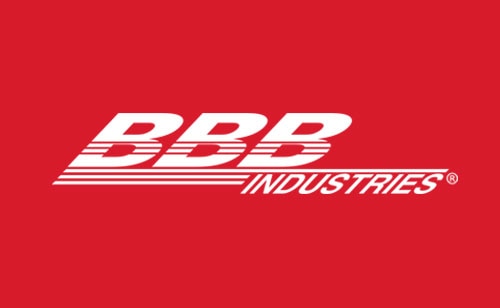
Blog
How Sustainable Manufacturing at BBB is Inspiring
You hear a lot about the circular economy. But what is it? According to the EPA, a circular economy is a sustainable business strategy that keeps materials and products in circulation for as long as possible. At BBB Industries (BBB), we actively contribute to a circular economy, setting an inspiring example in the manufacturing industry.
The Return Process at BBB
At BBB, we have a dedicated team that ensures worn and broken parts are returned to us after their first life on the road. This integral return process relies on our team to maintain a steady flow of “core” parts, which are essential to meet consumer demands. Interestingly, this demand is met mostly by the same customers who purchase BBB products. This creates a collaborative relationship where both partners rely on each other to ensure quality parts are available and drivers are kept on the road.
When gaps in inventory arise, our core procurement team turns to channels such as wrecked vehicle salvage and junkyard collection. The intricate process of deciding what to buy, when to buy it, and at what price is informed by complex reports distributed by a BBB core data analyst.
How Sustainable Manufacturing Inspires Jake
Jake is one of our dedicated team members who excels in knowing what to buy, when to buy it, and at what price to procure automotive products. Growing up in middle Tennessee with a mother who taught environmental science, Jake understood the importance of reducing waste and sustainability from an early age.
His understanding deepened during an internship in Denmark at a sustainable stove manufacturer, where he learned about the Danish emphasis on corporate sustainability and the importance of taking care of the Earth. This experience showed him how an environmental focus could benefit both the planet and business.
When Jake started his MBA and his first professional role as a procurement specialist at a major OEM, he noticed the significant environmental impact in business operations. That’s when he came across BBB Industries.
Discovering BBB's Remanufacturing Process
As Jake walked into a BBB facility, he was struck by the sheer scale of the operation. On one side, there were automotive parts set for repair. On the other side, pallets of boxed parts were ready to be shipped. In the middle, rows of heavy-duty machinery worked tirelessly.
Jake's tour with the site manager, Terry, introduced him to the concept of remanufacturing. Before this, he had heard the term but didn’t fully grasp its meaning. Terry explained the process of cleaning, fixing, and component replacement, bringing Jake back to his early years at home and in Denmark, reflecting on the lessons he learned about environmentalism. It became clear that the circular economy at BBB epitomized sustainability in business.
"Before you come into remanufacturing, you hear the word but you don’t necessarily know what it means. Once I stepped into the facility and saw the magnitude of reuse, repair, and efficiency, only then did I understand how BBB is sustainable." Said Jake Crowder.
Jake's Role and Impact at BBB
Jake has now spent six years with the BBB core procurement team, where his role has expanded significantly. His responsibilities include core market analytics, investigating upcoming customer demand forecasts, and effectively communicating market changes to the core buying team. Jake maintains high-value relationships with BBB customers who provide about 90% of BBB's core products.
Despite this, a core gap always exists since not all parts are returned, and not all returned cores can be fully reutilized. To bridge this gap, the purchasing organization turns to the spot market, which resembles the "wild west" of commodities trading, with conditions frequently changing and impacting the price and availability of specific cores.
With 50 to 100 core vendors per category, managing tens of millions of dollars worth of products is no easy task. However, these efforts are part of the larger picture of a circular economy at BBB, where sustainable manufacturing produces over 15 million quality parts per year across the globe. It all starts with minimizing waste and preserving the valuable materials already taken from Earth.
"As a part of the core procurement process, I advocate for the circular economy. My contribution is keeping the operations running—helping people find better ways to reuse more and do things in ways that are better for the environment." Said Jake Crowder.
Conclusion
At BBB Industries, sustainable manufacturing is more than a practice; it's a philosophy that inspires us to continuously innovate and improve. Through dedicated team members like Jake and a robust circular economy model, BBB exemplifies how businesses can achieve sustainability while meeting consumer demands and maintaining operational efficiency.





